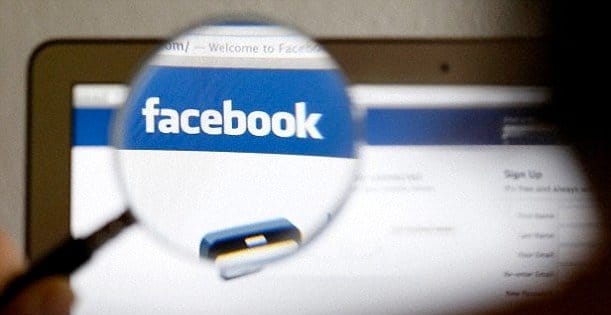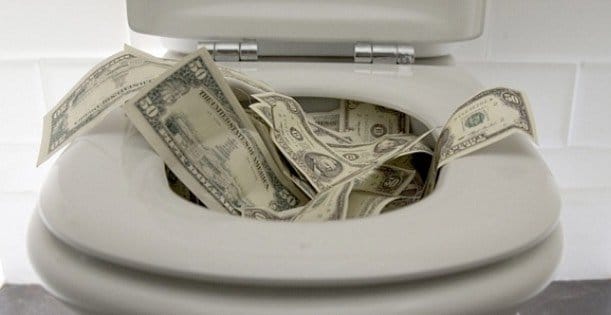 Written by ContentPowered.com
Written by ContentPowered.com
Some pages in the last month or so have been seeing an interesting notification appear on their page. They log in one day and see a message at the top; Facebook has removed some fake likes from this page.
For some, this sends them into a panic. For others, it’s a minor nuisance. Still others ignore it entirely. What happened?
Well, Facebook has been on a crusade against like scammers and fake likes. Fake likes hurt the usability of the site, and as such, they’re penalizing pages that accumulate them, penalizing accounts deemed fake, and trying to ban anyone who runs a fake like service. Periodically, they remove fake likes from a page. In the past, there was no real notification of this. You might notice that Facebook announced a purge, and it coincided with a drop in your follower count, but that was all. If you didn’t notice, or you weren’t hit very hard, you might only see the minor fluctuations that come with running a page. After all, people unfollow pages all the time.
Now, though, Facebook tells you when the drop in likes is associated with the actual removal of fake likes. This is often caused by the removal of those fake like accounts, though it sometimes comes from the removal of inactive accounts. So what should you do when you see this notification?
Determine Where the Fakes Came From
The first thing you should do is make an attempt to determine where the fake followers came from. There are a few possible sources, though you probably won’t be able to pin down exactly which caused it.
- Natural accumulation. These days, fake like bots are fairly sophisticated. They will rove Facebook naturally looking for pages to like, even though they aren’t specifically paid to follow you. This activity makes them look more natural and thus harder to identify as being bots. If a flock of accounts all like the same pages in unison, they’d be very obvious and easy to ban. What can you do about this? Nothing, unfortunately.
- Facebook ads. Facebook’s ads have a tendency to accumulate fake likes in addition to real, valuable page follows. This is for the same reason as the previous bullet; bots want to hide themselves. If they’re inside your target zone for ad targeting, they’ll probably click on your page and like your business. What can you do about this? Ideally, refine your ad targeting to exclude the characteristics of like bots, like geographic location.
- Purchased likes. Often, inexperienced businesses will purchase Facebook followers, hoping to receive legitimate, real followers. Unfortunately, purchasing from cheap sellers tends to bring in more bots than anything else. Even if your business moved on from these techniques and has been purely white hat since, those old bots still linger. It’s possible old follows were removed. What can you do about this? Just don’t buy likes from an untrusted seller. Real sellers of legitimate likes are more like third party ad campaigns than Fiverr gigs.
- Negative Like Attacks. Since buying fake likes is generally cheap, sometimes a business will buy them for a competitor, in an attempt to dilute their message and make it harder for them to reach their customers. If you notice an unexplained surge in your follower count, it’s possible you’ve been the target. What can you do about this? Monitor your likes and make sure you remove bad likes as they come in. You should also report them to Facebook.
Stop Activities that Bring in Fake Likes
Once you’ve determined where the fake likes probably came from, you’ll have some idea whether or not it’s an action on your part that caused them. If it was, you should take steps to stop that action. For example, if you’re buying fake likes from a low quality seller, you should stop paying that seller for their services and cancel any contracts you have.
If you determine that your ads are to blame, look into better targeting. Chances are, you’re going to want to remove certain geographic locations and languages from your targeting. Even if you lose the occasional rare rich Indian customer, you make up for it with a wider reach and greater influence on Facebook.
Audit Your Remaining Likes
Facebook does not make it easy to audit your likes. The best you can do is view the most recent few hundred followers. You should scan as many of them as possible looking for fake followers. What do fake followers look like?
They tend to share a number of common characteristics. They have very little information posted on their profile, and may not have pictures at all. If they do have pictures, those pictures might be commonly shared – check them with a reverse image search. If a fan looks fake, remove them and refresh the list to add another to the bottom.
Eventually, Facebook will stop displaying more fans. When this happens, you’ve done as much auditing as possible. Until Facebook expands this capability or allows a third party user to hook into your follower list to audit them, you can’t do any more.
Establish Fan Monitoring
Now that you’ve done what you can to minimize the number of fake followers you still have on your page, you need to establish a program of monitoring your incoming followers. Each day, when new users follow your page, check those users. Try to make sure they’re legitimate users, and not spambots or like bots. If they’re fake, remove them. The only way to truly keep ahead of the problem is to be very proactive, and even then, it can be a full time job for pages with millions of fans.
Work to Grow More Legitimate Likes
When it comes time to replace those fake likes, you need to make sure you’re getting legitimate followers. There’s a lot that goes into this, but here are a few general tips.
- Post content. Post more content more often, on a consistent schedule. When you leave large gaps in your posting schedule, users won’t want to stick around and like your page, meaning a higher percentage of the people who do like you are fake.
- Engage your fans more. When you engage them, they post more, and thus share your posts more often to their friends. This increases your reach and gets more word of mouth followers.
- Target your ads appropriately. Remove countries known to farm out likes, or really any country in which you don’t sell products. If you never sell anything to anyone in Thailand, why bother running ads to people there?
- Grow a reputation outside of Facebook. A mailing list, a good blog, an active Twitter; these all help you find other sources of verified good fans. There’s not a lot of crossover between fakes on platforms; a fake Facebook user won’t also be a fake Twitter user. This helps you leverage different communities into one larger community.
In general, just keep an eye on your likes as you get them and strive to get them from legitimate sources. If done properly, your likes should grow naturally and with highly interested users.




